 Tel/WhatsApp
Tel/WhatsApp
From cassava to fufu flour: key processing steps and quality control points
Fufu flour is a staple food in many African countries, made from processed cassava. It is widely consumed due to its versatility, long shelf life, and nutritional value. The transformation of raw cassava into high-quality fufu flour involves several critical steps, each requiring strict quality control to ensure safety, taste, and texture. In this article, Henan Jinrui outlines the key processing steps and quality control points in fufu flour production.
Processing Step 1: Cassava Selection and Cleaning
The first step in fufu flour production is to select high-quality cassava roots and clean cassava thoroughly. Freshly harvested cassava often has a lot of dirt and impurities on the surface. Cleaning the cassava is a key step in fufu flour production, determining the quality of the fufu flour.
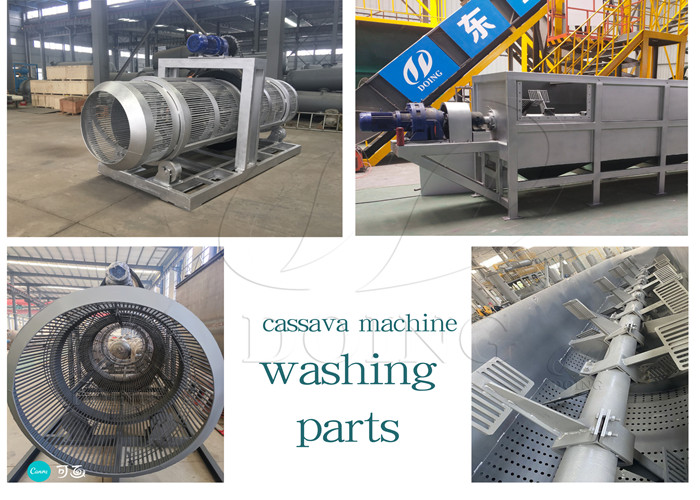 Cassava cleaning equipment
Cassava cleaning equipment
Quality Control Points
- Select High Quality Cassava: Only healthy, unblemished roots are chosen. Discard roots with rot, pest damage, or signs ofcyanogenic glycoside accumulation, as these contain toxic compounds that can cause cyanide poisoning.
- Cleaning Thoroughly: Using professional cleaning equipment for cassava processing, such as Henan Jinrui dry sieve and paddle washer, which adopts countercurrent washing principle, achieving good cleaning effect.
Processing Step 2: Cassava Peeling
After cleaning, the cassava peels need to be removed. Because the cassava peels contain toxins, this processing step ensures the safety of fufu flour production. Cassava peeling can be done by hand or by machine. The specific method you choose depends on your needs.
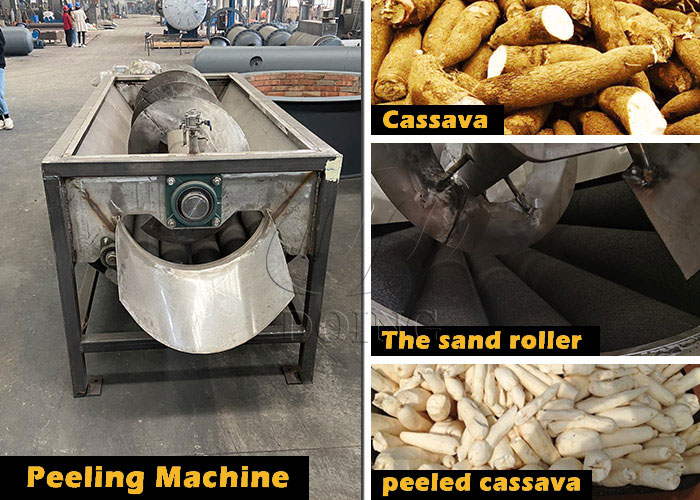 Cassava peeling equipment
Cassava peeling equipment
Quality Control Points
- Thorough Peeling: Incomplete peeling can leave cyanide and fiber residue, affecting the texture and safety of the fufu flour production. If you choose to peel the cassava by machine, choose one with a high peeling rate, such as Henan Jinrui's, which boasts a 96% peeling rate.
- Hygienic Processing: Keep peeling tools (knives, peelers) clean to prevent microbial growth. Henan Jinrui's peeling machines are equipped with a spraying system, ensuring both clean cassava and a hygienic production environment.
Processing Step 3: Cassava Grinding
Grinding the peeled cassava is a key processing step in the transformation from cassava to fufu flour. Grinding the cassava maximizes the release of starch, the higher the crushing rate, the higher the fufu flour yield. Henan Jinrui's cassava rasper is the choice of most fufu flour processors due to its high crushing rate of 98%.
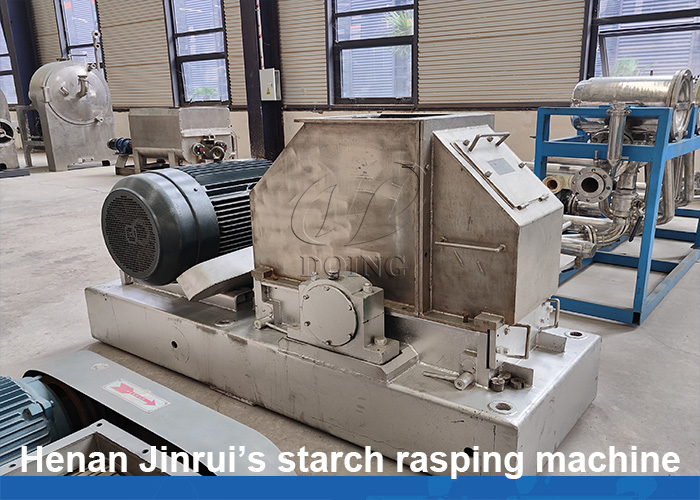 Henan Jinrui rasper
Henan Jinrui rasper
Quality Control Points
- Stainless Steel Material: Use stainless steel graters to prevent metal contamination. Henan Jinrui's rasper adopts stainless steel, ensuring the high quality of fufu flour production.
- Uniform Grinding: Ensure uniform grating for consistent texture in fufu flour production.
Processing Steps 4: Fermentation
Fermentation is a key processing step in fufu flour production, primarily to reduce cyanide, improve the flavor, and soften the texture. This step typically involves placing grated cassava mush in fermentation tanks.
Quality Control Points
- Control fermentation time: Generally speaking, the best fermentation time is 24-72 hours. The specific time depends on the fermentation temperature. Too long or too short a time will affect the quality of fufu flour production.
Processing Steps 5: Dewatering
After fermentation, the cassava mash is dehydrated in a plate-frame filter press. This process reduces the moisture content of the fufu flour, facilitating the final drying. Common dehydration equipment used for this step includes plate-frame filter press and hydraulic press, depending on the scale and level of automation required for your fufu flour production.
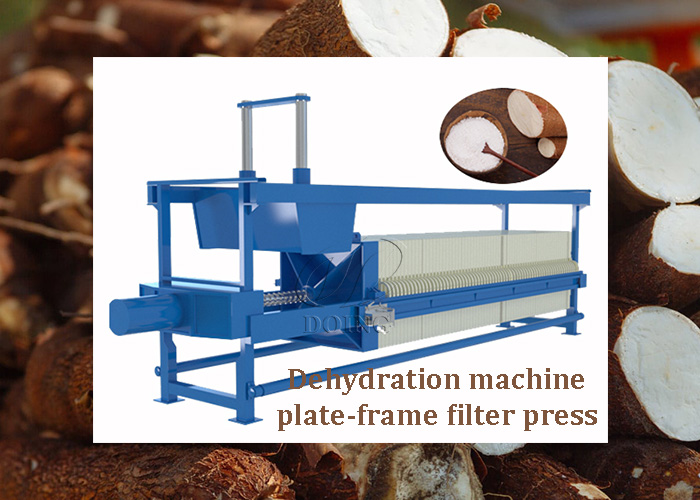 Plate-frame filter press
Plate-frame filter press
Quality Control Points
- Accurate moisture content: During the fufu flour production, the moisture content needs to be precisely controlled to keep it as low as possible below 40% to avoid gelatinization during the subsequent fufu flour drying process. Henan Jinrui's plate-frame filter press can reduce the moisture content of fufu flour to about 38%, ensuring the quality of fufu flour production.
Processing Steps 6: Drying
High-quality fufu flour also has high standards for moisture content, so the dehydrated fufu flour needs to be dried. The commonly used drying equipment is the flash dryer. Henan Jinrui's flash dryer can quickly reduce the moisture content of fufu flour to 12%, which meets the production standards of high-quality fufu flour.
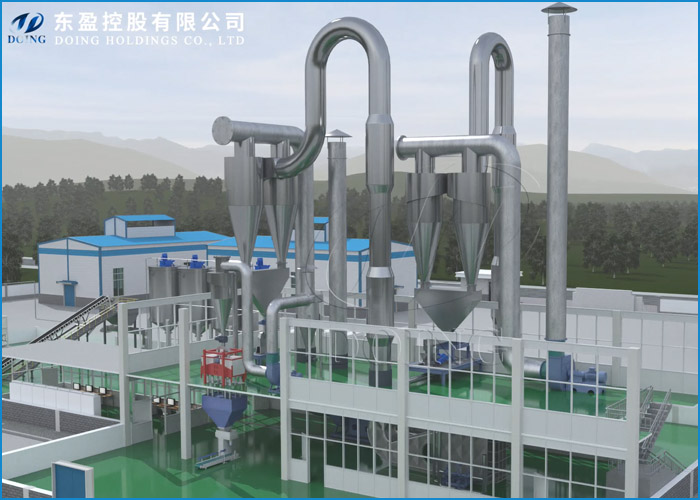 Henan Jinrui flash dryer
Henan Jinrui flash dryer
Quality Control Points
- Uniform drying: Ensure even drying to prevent moisture pockets (which cause mold).
- Avoid overheating: Drying above 60°C can denature proteins and affect fufu flour color.
Processing Steps 7: Sieving and Packaging
The final step in the cassava to fufu flour process is sieving and packaging. The dried fufu flour is sieved to ensure a uniform texture and obtain high-quality fufu flour. Finally, it is packaged by a packaging machine to facilitate the storage and sale of the fufu flour.
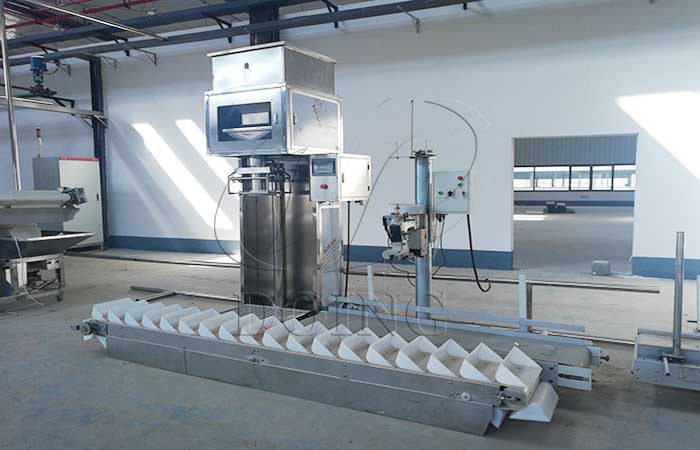 Fufu flour processing equipment
Fufu flour processing equipment
Quality Control Points
- Proper sealing: Package fufu flour in moisture-proof, airtight bags to prevent tide and insect infestation.
- Suitable storage environment: Store in a cool, dry place to extend shelf life up to 6–12 months.
By strictly controlling each processing step—from cassava cleaning to fufu flour packaging. Producers can ensure fufu flour is safe, nutritious, and meets consumer expectations for texture and flavor.
In summary, Fufu flour has a large market in Africa. If you want to know more about fufu flour or you want to start your business of cassava processing. Our sales representatives will recommend the most suitable products for customers based on their needs,and we can also customize them according to their requirements. If you are ready. Henan Jinrui is your best choice. Feel free to contact us!
-
 Unlocking Nigeria's Potential: Starting a Lucrative Cassava Starch Business
Unlocking Nigeria's Potential: Starting a Lucrative Cassava Starch Business
-
 5 Must-Know Features Before Buying a Modern Cassava Starch Machine
5 Must-Know Features Before Buying a Modern Cassava Starch Machine
-
 Advantages of Modern Garri Processing Equipment Over Traditional Methods
Advantages of Modern Garri Processing Equipment Over Traditional Methods
-
 How does the manioc flour flash dryer reduce energy consumption?
How does the manioc flour flash dryer reduce energy consumption?
-
 What Kind of Engineering Service Can Henan Jinrui Offer in Garri Processing Project?
What Kind of Engineering Service Can Henan Jinrui Offer in Garri Processing Project?
-
 Tapioca starch hydro-cyclone station configuration: which stage should I choose?
Tapioca starch hydro-cyclone station configuration: which stage should I choose?
-
 A guide to expanding from cassava planting to cassava flour processing in Indonesia
A guide to expanding from cassava planting to cassava flour processing in Indonesia
-
 The Advantages of Fully Automatic Potato Starch Production Lines
The Advantages of Fully Automatic Potato Starch Production Lines
-
 From cassava to fufu flour: key processing steps and quality control points
From cassava to fufu flour: key processing steps and quality control points
-
 Ratio of cassava to starch: How many tons of cassava can extract one-ton starch?
Ratio of cassava to starch: How many tons of cassava can extract one-ton starch?
-
 Garri Processing Equipment: A Deep Dive into Production Costs and Profitability
Garri Processing Equipment: A Deep Dive into Production Costs and Profitability
-
 Doing Factory Ships High-Quality Garri Processing Equipment to Nigeria
Doing Factory Ships High-Quality Garri Processing Equipment to Nigeria
-
 Selling High-Quality Cassava Processing Equipment to Uganda
Selling High-Quality Cassava Processing Equipment to Uganda
-
 Gari processing line successfully shipped to Nigeria
Gari processing line successfully shipped to Nigeria
-
 Cassava starch fine fiber sieve purchased by Indian client
Cassava starch fine fiber sieve purchased by Indian client
CONTACT US
DOING company offers cassava processing machine from single machine to the complete production line. If you want to get more details about cassava processing machine, please contact us:
- Do you want to buy machine?
- Yes, I want to buy machine
- No, I want to learn more in advance.
- What is your raw material?
- Cassava
- Potato
- Sweet potato
- Others
- 2. What is the final product you want to produce?
- Garri
- Cassava flour
- Cassava starch
- Cassava chips
- Attiekie
- Bammy
- Others
- 3.What is your capacity plan?
- Small scale garri machine
- 1ton per day
- 2tons per day
- 3tons per day
- 10tons per day
- 20tons per day
- Others
- 3.What is your capacity plan?
- Small scale
- 5tons per day
- 10tons per day
- 20tons per day
- 50tons per day
- 100tons per day
- Others
- 3.What is your capacity plan?
- Small scale
- 5tons per day
- 10tons per day
- 20tons per day
- 50tons per day
- 100tons per day
- 200tons per day
- 300tons per day
- Others
- 3.What is your capacity plan?
- Small scale
- Middle type
- Large scale
- What is your capacity plan?
- Small scale
- 5tons per day
- 10tons per day
- 20tons per day
- 50tons per day
- 100tons per day
- 200tons per day
- 300tons per day
- Others








